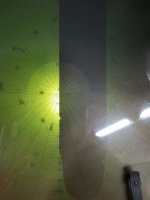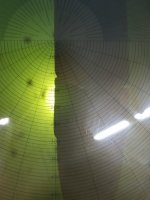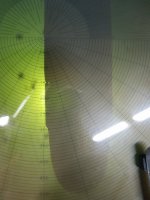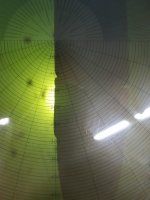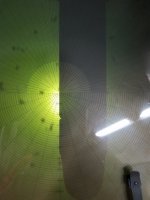I think that is because most rifles out perform 22lr ammo at long range.
A proper BR rifle will cut 50 yard groups in half but not at 200.
I'm not saying the rifle has nothing to do with it. My previous match rifle was a Ruger precision (some what)

Rimfire. At 50 yards my Rim X out shoots it on a bad day. On a good day the Rim X makes the Ruger look silly. But at 200 yards shooting the same ammo in both the accuracy is very comparable.
I understand what you're getting at. Some rifles can shoot very well indeed at 50 yards, but when going out to 200 the distinctive accuracy it had at the shorter distance is hard to discern.
It's important to keep in mind that no rimfire rifle will perform consistently well at 200 yards because of at least two factors beyond the control of the shooter, and one that's not.
1. Shooting at 200 invariably occurs outdoors, where the vagaries of air movement are all but unavoidable and often unpredicted. This causes inconsistency on the target.
2. All the smallest flaws, inevitable in .22LR ammo -- including inconsistent MV and all those other factors described by the Stowaway in the link above -- make themselves invariably and abundantly clear at long distances, where inconsistencies are also magnified.
3. With .22LR shot execution is important for many reasons, including the relatively long barrel time. Imperfections here are also magnified on target as distance increases.
In short, there's a lot militating against consistent results at 200 yards and it's much more difficult to get consistent results the further the target. Even if shooter imperfection is removed from the equation, there remains a lot of unpredictability. Was it the wind? Was it the ammo? It's difficult to account for the results on the target where every problem is magnified.
That explains, at least in part, why when one rifle that shoots groups twice as small at 50 than another may not do so at 200. There's too much at play that works against maintaining a consistent level of accuracy as distance increases. It also partly explains why your RimX accuracy at 200 often seems comparable to that of your Ruger.
Of course, even with the best ammo the Ruger is very unlikely indeed to ever shoot
better than the RimX with its best ammo -- at least for predictable reasons. Why? If the RimX can shoot much better than the Ruger at 50, it can't predictably be bested at longer distances. If it shoots better at 50, it must shoot better at 100. If it shoots better at 100 it will, by all that's predictable, shoot better further out. The math demands it.
Math is predictable to any distance. But variations due to wind and ammo performance are not. They become increasingly unpredictable with distance -- yet they are unavoidable, they always go with .22LR shooting. There's just too much working against consistent accuracy as distance goes up.
But it's not really fair to say the rifle outperforms the ammo. One is nothing without the other. It may sound trite, but a .22LR can only shoot ammo that's made for it. As long as the ammo has limitations, a rifle inevitably, unavoidably has those same limitations. Just as a .308 Win., for example, can't be expected to perform as exceptionally at 1000 yards as it does at 300, a .22LR can't be expected to perform at 200 as it does at half or a quarter of that distance.

